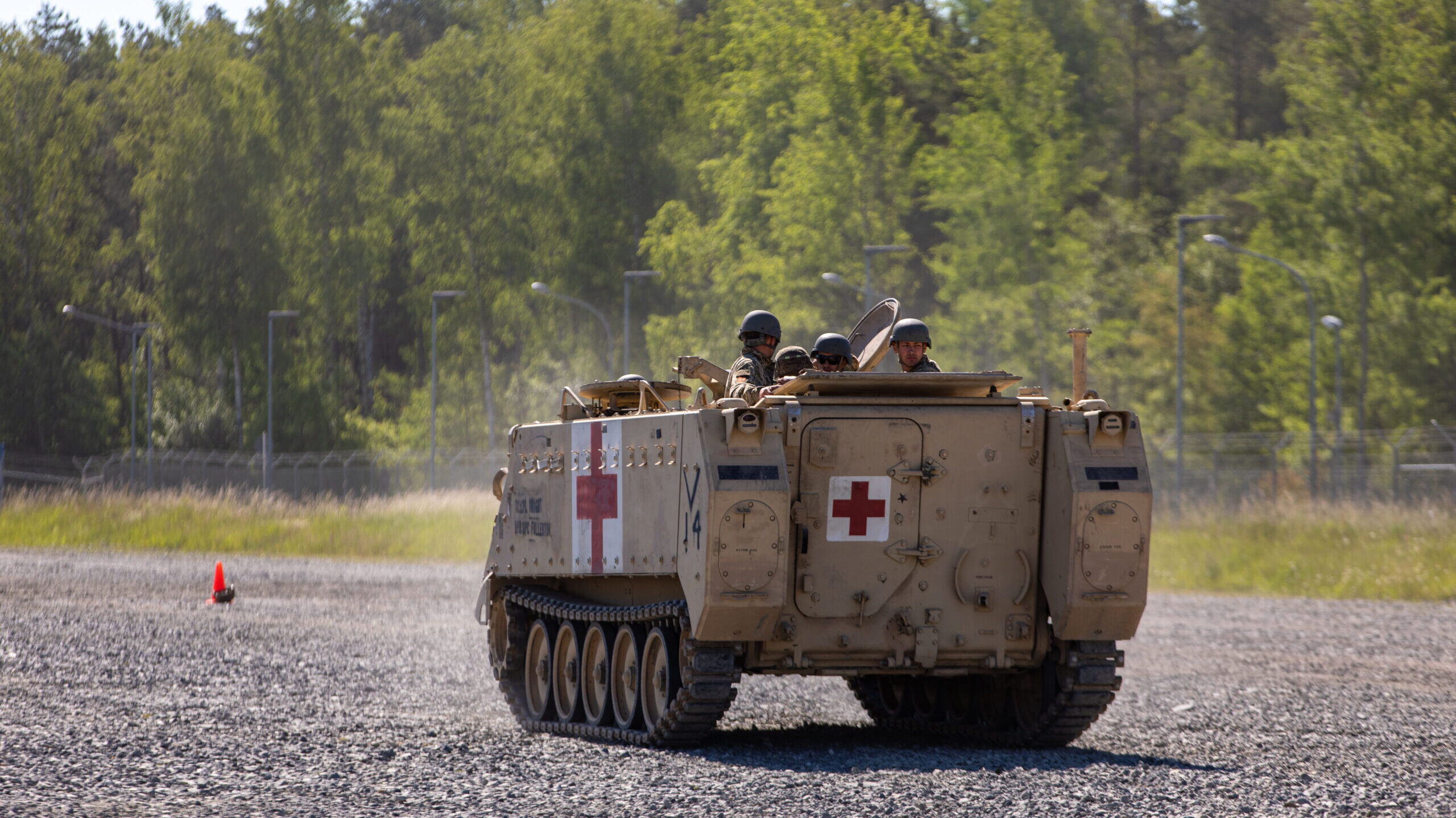VALERIE INSINNA

WASHINGTON — As 2022 started, the Western defense establishment was focused on a singular question: Would Russia go through with its planned invasion of Ukraine, a scenario that US intelligence officials had warned could occur in the early months of the year?
The answer, as the world tragically found out on Feb. 24, was that Russian President Vladimir Putin was wholly willing to risk thousands of lives — both Russian and Ukrainian — in the hopes of overthrowing a sovereign nation, decapitating its leadership and turning it into a puppet state.
But while analysts predicted that the Ukrainian government would crumble in weeks, or even days, when faced with Russia’s much larger and more advanced military, what followed was a series of events that seemed out of a Hollywood script. It turns out that Russia’s military was far less capable than anyone had imagined, with the combination of inexperienced troops, poor command decisions and shoddy logistics leading to a string of embarrassing losses on the battlefield.
Meanwhile, under the leadership of Ukrainian President Volodymyr Zelenskyy, the Ukrainian people seemed to show an almost inhuman level of resolve. On social media, people shared videos of old women angrily berating Russian soldiers and spread the word about acts of heroism by Ukrainian troops, like the guards at Snake Island who famously told a Russian warship to “go fuck yourself” rather than surrender.
It’s almost impossible to overstate the impact the war in Ukraine has had on the NATO alliance. As of Dec. 16, the United States has given almost $20 billion in security assistance to Ukraine, with the transfer of a Patriot missile defense battery reportedly in the works. Sweden and Finland are now in the process of obtaining NATO membership. And Germany, a country with deep economic ties to Russia, canceled the Nord Stream 2 gas pipeline and vowed to ramp up defense spending — even reversing course on the F-35 and announcing plans to buy the controversial fighter.
The war in Ukraine (and subsequent delivery of billions of dollars in air defense equipment, munitions, drones, guns and other weaponry) also prompted a major realization: The Pentagon and defense industry’s ability to rapidly mobilize to produce munitions at the pace that would be needed during a full-scale war has atrophied, Pentagon acquisition czar Bill LaPlante said repeatedly this year
To fix that, the Pentagon will need to push more money to ramp up munitions production, and then keep that spending steady, he said.
“Contracts are what matters. Money is what matters,” LaPlante said in November. “When people see that there’s multiyear contracts coming along for munitions and that we’re going to put production lines at higher capacity, and we’re going to pay for it and we’re going to put it in the [request for proposal] and we’re going to award to it, they’ll pay attention.”
With so much energy directed at the conflict in Ukraine, the Biden administration delayed the release of the National Security Strategy but sent the classified version of the National Defense Strategy to Capitol Hill in March to help inform budget decisions.
But when the NSS and NDS were finally released, officials said the conflict in Ukraine did little to alter how the United States perceives its adversaries.
Both strategies double down on the Defense Department’s assertions that China remains the biggest long-term threat to the United States, with the department characterizing Russia as an “acute threat” due to the “immediate and sharp” pressures it has put on NATO.
“Even as we confront Russia’s malign activities, the defense strategy describes how the department will act urgently to sustain and strengthen deterrence with the [People’s Republic of China] as our most consequential strategic competitor and pacing challenge,” Deputy Defense Secretary Kathleen Hicks said in March. China “has the military, economic and technological potential to challenge the international system and our interests within it.”
The big questions of 2022 may be settled, but more stand in their wake:
With a Democrat-controlled Senate and a Republican-controlled House making it more difficult for the Biden administration to execute its agenda, will the White House be able to continue the robust support for Ukraine that it has sustained over the past year?
Colin Kahl, the Pentagon’s top policy official, seems to believe so.
“You’ve heard some rhetoric coming out of House Republicans, but I think that there is a strong level of bipartisan support that’s likely to persist, regardless of how the elections end up turning out tonight,” he told reporters on Election Day.
“I think there’s a widespread recognition that the stakes in Ukraine are just bigger than Ukraine. Obviously, you know, Ukraine is not only fighting for its its independence, its sovereignty, its territorial integrity, its democracy. But there’s a principle at stake here… which is that we don’t want to live in a world where big countries believe that they can swallow up their small neighbors,” he said.
It’s unclear whether the lawmakers who have criticized the level of aid going to Ukraine — such as Rep. Marjorie Taylor Greene of Georgia, who has vowed to send “not another penny” to Ukraine — will garner the momentum necessary to force the White House to curtail its support.
However, a December poll from the Chicago Council on Global Affairs found that while a majority of Americans still support supplying aid to Ukraine, that support is decreasing particularly among Republicans. If that trajectory continues, more lawmakers could begin questioning the current level of security assistance.
Another big question revolves — as always—around next year’s budget. Given record-setting inflation, how much of a bump in defense spending should be expected? How will the Pentagon balance near term-spending needed to maintain its presence in Europe against the long-term need to develop cutting-edge new tech to contend with China?
No comments:
Post a Comment